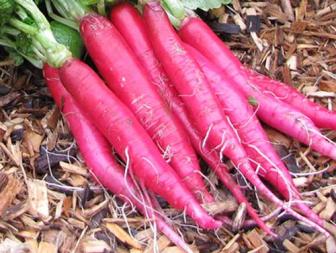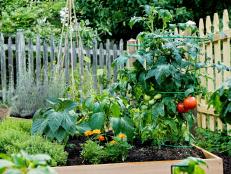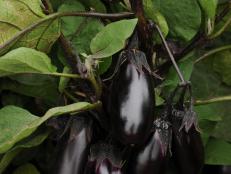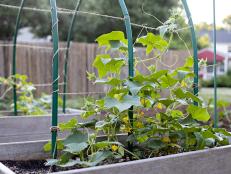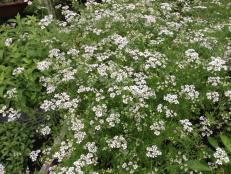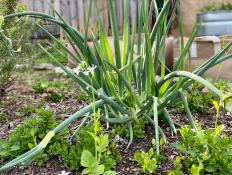Companion Plants for Carrots
Carrots are one of the trickiest, but most rewarding, vegetables to grow at home. Try companion planting techniques for a more successful carrot crop this year.

Carrots aren’t the easiest veggies to grow, but when you pull that first crunchy, sweet, and flavorful root from the soil, from the first bite you will know that it was well worth the effort. Give carrots their ideal growing environment and experiment with companion planting to improve yields of healthy and delicious homegrown carrots.
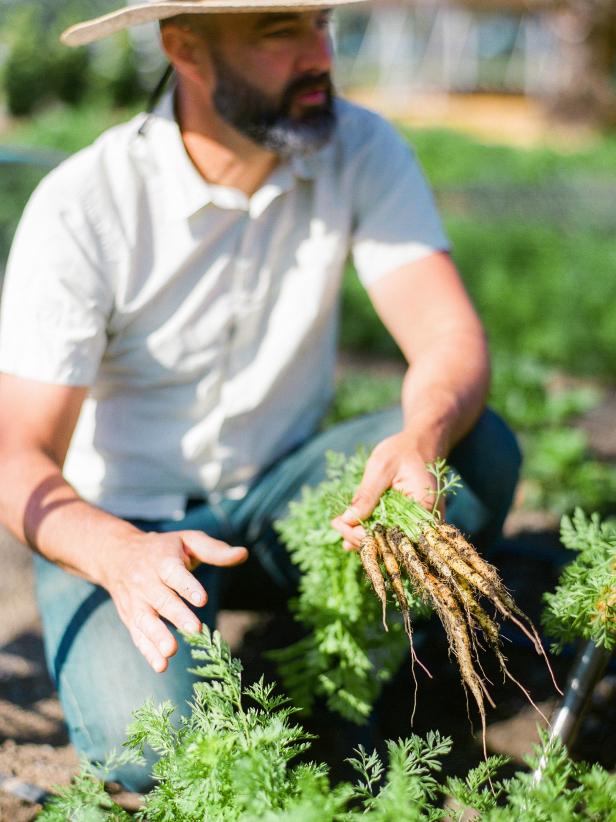
Kendall Jackson Wine Estate and Gardens
What is Companion Planting?
Companion plants can improve the health or productivity of a desired crop. The root of companion planting is plant diversity. By growing a variety of crops rather than just a few species, you will be able to fill more niches in the garden ecosystem and improve the growing environment for your crops, including those in your vegetable garden. Not all companion plants fill the same role. Depending on the species, companion plants may build and improve soil quality, repel pests, attract beneficial insects, or improve disease resistance.
Carrot Companions
- Onions repel carrot rust fly and aphids and attract predators of the carrot rust fly. Strong-smelling onion relatives, like garlic and chives, may work as well. This partnership works both ways — onions grown with carrots tend to have less damage caused by thrips.
- French marigolds (Tagetes patula) deter carrot rust fly and carrot psyllid. Growing carrots with marigolds also increases the sugar and carotenoid contents of carrot roots.
- Pot marigolds (Calendula officinalis) repel nematodes and carrot psyllid and may also develop sweeter roots rich in healthy carotenoids.
- The fragrant herbs thyme and basil discourage yellow-striped armyworm caterpillars from defoliating carrots.
- A living mulch of subterranean clover suppresses carrot rust fly and decreases cavity spot (Pythium spp.) disease.
- Carrots grown after a cover crop of phacelia, buckwheat, sunflower or mustard may be more productive.
- Carrots need deep, loose soil to develop healthy taproots. If you have compacted clay soil, try a cover crop of buckwheat, forage radish, or ‘Appin’ turnip to break up the clay and improve soil structure.
Tips for Growing Carrots
Carrots can be an array of colors, including deep purples, reds, yellows, whites, and the traditional orange. There are even varieties of bicolored carrots with a different colored core. Taproots also vary in terms of size and shape, from long and cylindrical to short and rounded. If you have struggled with pests or diseases in the past, try growing a resistant variety.
'St. Valery' French heirloom carrot

'Purple Haze' hybrid carrot

'Deep Purple' hybrid carrot

'Lunar White' heirloom carrot

Carrots prefer to grow in cool weather, which makes them great candidates for spring and fall gardening. Northern regions may grow carrots through the summer, and warmer regions may grow through the winter. Carrots have very specific growing requirements. For instance, these taproot forming veggies don’t like to be moved, so plan on sowing seed directly into the garden rather than transplanting a carrot plant that has already taken root.
Soil preparation is key for healthy root development. Ensure soil is loose and free of stones that could impede growing roots. If you struggle with rocky or compacted soil, carrots also grow well in raised beds and large containers. Sow seeds about a half inch deep, lightly covering the small seeds with soil. Keep an eye on watering until seedlings emerge and establish — carrot seedlings do not tolerate dry conditions well.
It’s a good idea to thin young plants so there’s plenty of room for roots to form. Early or small rooted varieties may have closer spacing requirements, so follow the instructions on the seed packet. Try to snip leaves at ground level rather than pulling thinned plants up from the roots to avoid damaging the remaining plants. The carrot rust fly is attracted to damaged carrot foliage, so remove thinned seedlings rather than leaving them behind in the garden. Carrots should be ready to harvest within 60 to 80 days, depending on the variety.
Where to Buy Vegetable and Flower Seeds
Find out where to buy your vegetable, flower and herb seeds based on a variety of important factors, including widest selection, most heirlooms, organic seed and regional varieties.
Tips for Crop Rotation
- Grow carrots with their relatives: parsnips, parsley, and cilantro. Plants that share a family tend to be susceptible to the same pests and diseases. Cultivating related plants in a different area of the garden each season will prevent diseases and insect eggs from building up in the soil.
- Carrots are happy to follow heavy feeders like solanaceous crops (tomatoes, potatoes, peppers) and brassicas (broccoli, cabbage, kale) on the crop rotation schedule.







